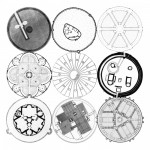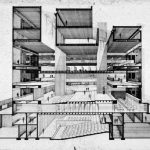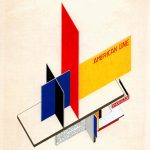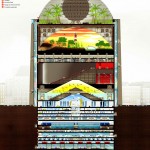
Born in Vienna in 1884, Frank R. Paul studied architecture, but applied his knowledge and passion in this field to illustrate cityscapes of a future to come. He became a famous and world-wide appreciated science fiction illustrator, working on an impressive number of science fiction, fantasy and comic books. Discovered by editor Hugo Gernsback (of cult editions “Amazing Stories“) in 1914, they started a prolific collaboration which defined the imaginery of sci-fi pulps in the 1920’s and became a main influence on lots of subsequent works in the genre.

Many representation techniques are directly borrowed from the artist’s architectural background: spaceships and interiors are shown in prespective section, axonometries and sometimes in a combination of more projections systems within the same drawing, as the composition of a board to present an architectural project. The language of the buildings and of urban sections in his works seems to carry the legacy of Italian Futurists, for example in the combination of multiple streets in the sky and in the powerful lines of the tower-like buildings interconnected by bridges. Given the simplicity which Frank R. Paul employed to describe human figures in his drawings, the architectural background assumes, almost all the times, the role of protagonist in a board. The carefully detailed and shaded buildings are sometimes composed in a combination of eclectic styles borrowed from past ages and updated to fit the futuristic imaginery.
“Paul remains the undisputed king of the pulp artists” Arthur C. Clarke
“Paul’s fantastic covers for Amazing Stories changed my life forever.” Ray Bradbury














Further reading:
From the Pen of Paul: The Fantastic Images of Frank R. Paul
Images via:
THE FANTASTIC ILLUSTRATION OF FRANK R. PAUL (archive)
This gallery proves Frank R. Paul still rules science fiction art (on iO9)
All artwork (c) Frank R. Paul estate




Leave a Reply